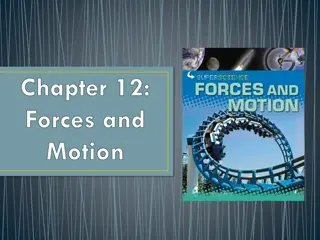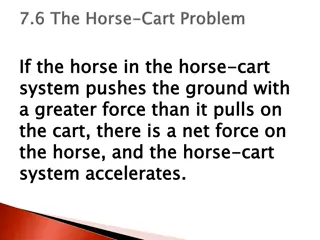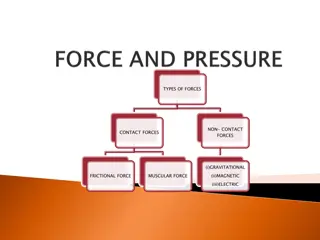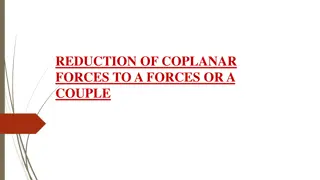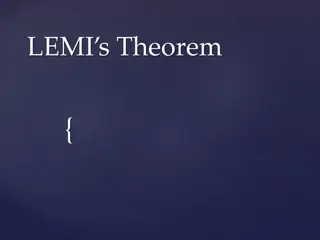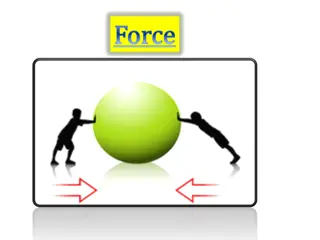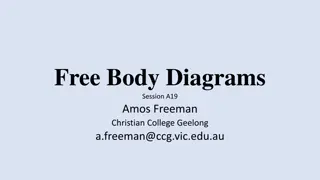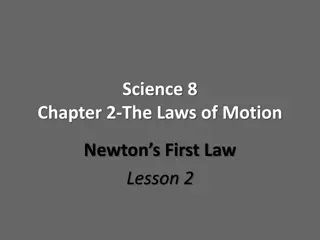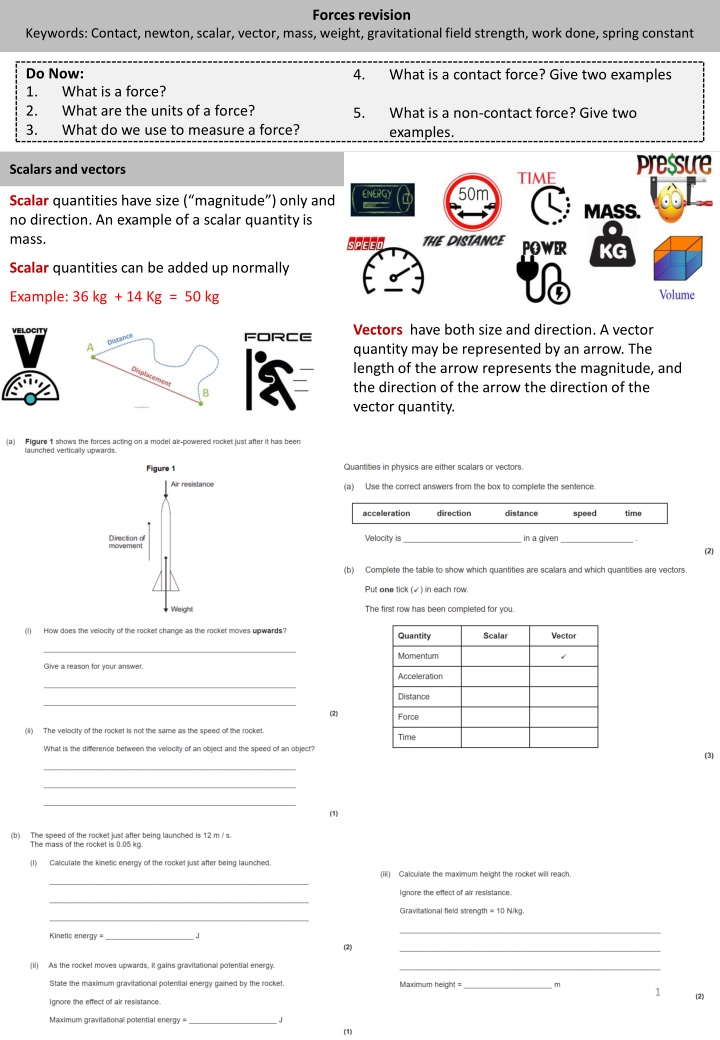
Understand Forces in Physics: Scalars, Vectors, Mass, Weight, Gravity, and Work Done
Explore the fundamental concepts of forces in physics, including contact and non-contact forces, scalar and vector quantities, mass, weight, gravitational field strength, work done, and elasticity. Learn how to calculate resultant forces, understand mass and weight relationships, and delve into the principles of work done and spring constants.
Uploaded on | 1 Views
Download Presentation

Please find below an Image/Link to download the presentation.
The content on the website is provided AS IS for your information and personal use only. It may not be sold, licensed, or shared on other websites without obtaining consent from the author. If you encounter any issues during the download, it is possible that the publisher has removed the file from their server.
You are allowed to download the files provided on this website for personal or commercial use, subject to the condition that they are used lawfully. All files are the property of their respective owners.
The content on the website is provided AS IS for your information and personal use only. It may not be sold, licensed, or shared on other websites without obtaining consent from the author.
E N D
Presentation Transcript
Forces revision Keywords: Contact, newton, scalar, vector, mass, weight, gravitational field strength, work done, spring constant Do Now: 1. 2. 3. 4. What is a contact force? Give two examples What is a force? What are the units of a force? What do we use to measure a force? 5. What is a non-contact force? Give two examples. Scalars and vectors Scalarquantities have size ( magnitude ) only and no direction. An example of a scalar quantity is mass. Scalar quantities can be added up normally Example: 36 kg + 14 Kg = 50 kg Vectors have both size and direction. A vector quantity may be represented by an arrow. The length of the arrow represents the magnitude, and the direction of the arrow the direction of the vector quantity. 1
Resultant forces The forces acting on any object can be shown using a force diagram. A force diagram uses labelled arrows to show all the forces acting on the object. The direction of each arrow shows the direction of each force. The length of each arrow is proportional to the size of the force. Resultant force on the crate = 50 N 30 N = 20 N to the left The motion of the object will depend on the resultant force. This is calculated by adding all the forces together, taking their direction into account. When more than one force acts on an object, the forces COMBINE to form a RESULTANTFORCE If more than one force is on an object, you can simplify the diagram by drawing just the resultant force. This is a single force that has the same effect as the other forces put together. 2
Mass, Weight and Gravity All objects have a force that attracts them towards each other. This force is due to gravity. http://image.slidesharecdn.com/gravity-100810205111-phpapp02/95/gravity-3-728.jpg?cb=1281473531 Even you attract other objects to you because of gravity, but you have too little mass for the force to be very strong. The strength of gravity at the surface of a planet is determined by its mass. g is a measurement of the gravitational field strength The gravitational field strength on the surface of the earth is 9.8 N/kg. The mass of an object is the amount of matter it contains. The mass of an object stays the same wherever it is, but its weight can change depending on the gravitational field strength. Weight is the force caused by gravity. The weight of an object can be calculated using the formula: weight = mass x gravitational field strength. [ W = m x g ] 3
Work done and elasticity work done = energy transferred This means the units for work are the same as the units for energy joules. work done = force x distance moved (W = F x s) Force is measured in newtons (N). Distance moved is measured in metres (m). Hooke s law says that the amount a spring stretches is proportional to the amount of force applied to it. F = k e Where: F is the applied force (in newtons, N), e is the extension (in metres, m) and k is the spring constant (in N/m). The spring constant measures how difficult it is to compress or stretch a spring. The larger the spring constant the more difficult is to compress or stretch. Ee = x k x e2 EPE (J) = 0.5 spring constant (N/m) extension2 (m) 4

